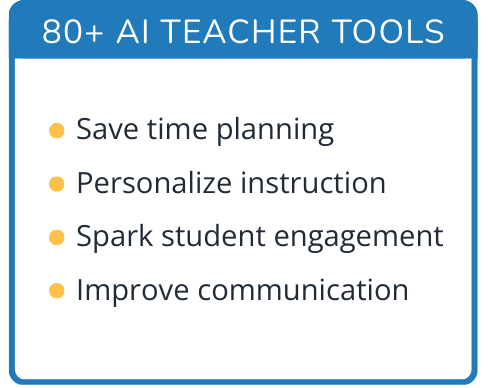Hi, what do you want to do?
British Council
What's Your Name?
What is your name? Scholars join in small groups to discuss questions about their names and listen to an audio about names before completing a worksheet. Afterward, individuals create a list of names heard in the audio and classify them...
K20 LEARN
Building To 100: Building And Decomposing Numbers
Following a catchy video about decomposing numbers, young mathematicians build and write numbers using dice. Class members work to create an anchor chart that displays six ways to make numbers. Beans get scooped and estimated, then...
Curated OER
Let's Grow Plants!
Students read and dramatize the stories "The Tiny Seed" and "The Carrot Seed" as an introduction to seeds and what they become. They work in small groups to plant their own seeds and over the span of a week (+ or -)students keep track of...
NASA
Cleaning Water
Give young scientists a new appreciation of fresh, clean drinking water. After learning about the ways astronauts recycle their air and water, your class will work in small groups creating and testing their very own water...
Curated OER
Break the Tension
Students experiment with the concepts of surface tension. They participate in a number of different experiments that introduce them to surface tension. They work in a small group in order to conduct these experiments.
Curated OER
Exploring Mars
Students, working in small groups construct scale models of the planets and solar system. They examine images of Mars and discuss what might have caused the features. They record facts about their planetary research in their journals and...
Curated OER
Lights, Camera, and Action!
These activities center around acting out a play to help create fluent readers who use expression and emotion. As readers work through the play the first time, they also practice decoding strategies. In small groups of four, they then...
Curated OER
Division of Decimals
Work with the class to investigate the concept of dividing decimals. They will use a variety of problem-solving skills in order to practice the operation of division. The teacher can use the dialogue to guide learners through the various...
Curated OER
Voyage: A Journey Through Our Solar System
Thoroughly written, this plan walks you through every detail of having your high school astronomers design scale models of the solar system. Complete instructions on building to scale, lesson procedures, and associated worksheets are all...
Curated OER
Run for the Cup!
Students gather information about the Melbourne Cup horse race in Australia. Then they study the geometry and physics behind the design of a racetrack. Students also work in small groups to problem solve and design their own board games...
Curated OER
"Reviewing Facts Through 10" Lesson Plan
Explore the joy of math with you little learners! They practice creating math problems with numbers from a fact family using numbers 1-10. They work independently with a set of connecting cubes to aid them in creating number sentences...
Arkansas Economics
The Bead Game
What better way to learn about different economic systems than to participate in them? An engaging bead game highlights the differences between market, command, and traditional economies. In small groups, 6th graders work through three...
Curated OER
The Call of the Wild: Silent Discussion
Give a voice to even the most quiet learners! Post discussion questions in different locations (on the whiteboard or around the room on posters). Class members then either answer a question posed or comment on a peer's response. Instead...
Academy of American Poets
We Sing America
Pair the famous poems "I Hear America Singing," by Walt Whitman, and "I, Too, Sing America," by Langston Hughes, with a more recent poem by Elizabeth Alexander called "Praise Song for the Day" to demonstrate a theme and introduce your...
Curated OER
Teaching “Level of Difficulty” through Close Reading, Reflection, and Performance
What makes a poem difficult? Explore that topic and more with your class as you work through the instructional activity detailed here. Using materials from Poetry Out Loud, a national recitation contest, individuals or small groups...
University of North Carolina
American Revolution: Events Leading to War
After learning about the growing revolutionary sentiment among colonists, class members work in small groups or pairs to design a political cartoon.
Curated OER
Sample Lesson 1: Is This Source Credible? Useful? Why and Why Not?
Build background knowledge for The Book Thief by Markus Zusak while teaching your pupils how to determine the credibility of online sources. The plan is designed to take place over the course of two days. On the first day, model...
NASA
Cleaning Water
From their sweat to the water vapor in their breath, astronauts recycle every possible drop of water while in space. After watching a short video describing the different ways materials are recycled and reused in space...
WE Charity
Elementary–Module 5: Transportation Solutions
How does transportation affect the environment? Using the fifth and final lesson from the WE Are Innovators—Elementary Modules series, scholars explore sustainable transportation. Pupils work in small groups to create innovative...
Institute for Humane Education
Selling "Boy" and "Girl"
Monster trucks, action figures, and video games. Are these toys designed for boys or girls? Scholars work in small groups to find and categorize examples of boy and girl toys from catalogs. Next, learners analyze the two sets of pictures...
PBS
The Meaning of the Fourteenth Amendment
The Fourteenth Amendment was extremely important to civil rights and is a crucial one to remember. The resource teaches about the Supreme Court decisions related to the amendment through writing exercises, reading, and working in small...
EngageNY
Grade 10 ELA Module 2: Unit 1, Lesson 9
How did Martin Luther King Jr. establish tone in his writing? Scholars analyze King's tone and discuss how he changes and refines his claim in "Letter from Birmingham Jail." They also define new vocabulary words, respond to a writing...
EngageNY
Grade 10 ELA Module 2: Unit 2, Lesson 1
Rafael Trujillo was president of the Dominican Republic in the 1930s. Pupils read and analyze the first six paragraphs of Julia Alvarez's autobiographical essay "A Genetics of Justice," in which the author describes Trujillo's impact on...
EngageNY
Grade 10 ELA Module 2: Unit 2, Lesson 9
How do authors develop the main ideas in their writing? Pupils consider the question as they read and analyze paragraphs 27–31 from Julia Alvarez's essay "A Genetics of Justice," in which Alvarez describes her decision to become a...




























